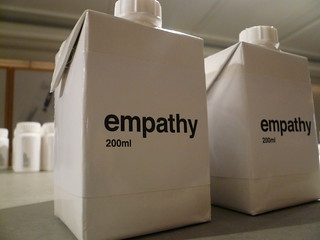 Given the opening up of the world and a shift to globalisation, it is important, especially in business contexts to be culturally competent – to be sensitive to differences and know how to work within a multicultural context.
Given the opening up of the world and a shift to globalisation, it is important, especially in business contexts to be culturally competent – to be sensitive to differences and know how to work within a multicultural context.
The following is a brief vignette (based on experience, but using fictional characters) of how the Geert Hofstede’s 6D model is one of the many tools that can help raise awareness, and start discussions.
The vignette
Together, Shuyi who was born and raised in Beijing in China, and with whom I work closely in New Zealand, have found Hofstede’s model a useful way to open conversations about how we can best work together that respects both of our cultural preferences.
With China, according to Hofstede’s model:
-
Power distance (attitudes of culture towards inequalities): China comes in at 80 (NZ is 22), signalling a society “that believes that inequalities amongst people are acceptable” (Hofstede, n.d.). In a workplace this means that the relationships tend to be polarised between managers and their team members, formal authority has great influence, and there is optimism about employees’ capacity to use their initiative and lead – but to also not have “aspirations beyond their rank” (Hofstede, n.d.).
-
Individualism (the degree of interdependence a society maintains among its members): With a score of 20 (NZ is 79) China is a strongly collectivist culture. In the workplace this means that there is an expectation that “hiring and promotions with closer in-groups (such as family) … [get] preferential treatment” (Hofstede, n.d.). People do not tend to be committed to a company, although there is a tendency to form close cooperative groups with possible hostility shown to other groups.
-
Masculinity (levels of competitiveness, achievement and success vs liking what you do): At 66 (NZ is 58) China is a Masculine society, which means in a work context that there is a drive to succeed, often meaning long hours and little focus on breaks or leisure time.
-
Uncertainty Avoidance (how cultures feel about ambiguity and the unknown): China, at 30 (NZ is 49), scores low on Uncertainty Avoidance. In a business setting, Chinese employees are usually comfortable with ambiguity, and tend to be “adaptable and entrepreneurial” (Hofstede, n.d.).
-
Long Term Orientation (attitudes to the past, present and future): With a score of 87 (NZ is 33), China has a very pragmatic culture, where traditions can easily adapt to changes in context. In the workplace, Long Term Orientation translates to perseverance to achieve results over time, as well as a focus on saving.
-
Indulgence (control of desires and impulses): At 24 (NZ is 75), China is a restrained society. In the workplace this may be expressed as cynicism or pessimism, and employees may see that indulgence is not a positive behaviour.
Looking at the scores, while Long Term Orientation shows the biggest numerical distance (meaning that there may be misunderstandings around the Kiwi focus on ‘quick results’ and short-term gains), the most useful for Shuyi and I was Power Distance. I had noticed Shuyi rarely said much in meetings, and hardly ever contributed ideas or suggestions in the shared Google Docs – and yet I knew from our discussions, she had a lot to offer! After I shared the results of Hofstede’s model with her, we talked about some of our assumptions. Shuyi felt it was rude for her to jump in with ideas (particularly alternative perspectives) during meetings, especially if the team leader or one of the really experienced team members was speaking. On the flip side, I had assumed that she just wasn’t keen to share – and I knew that other people in the team felt that she wasn’t really interested in being active on our projects. However, we were able to talk things through and discuss strategies such as me asking for her ideas directly during team meetings or in the Google Docs (but not all the time or too obviously), or providing signals such as a direct request for input. We both hope to continue the conversation!
In conclusion…
While these solutions are relatively surface and may not work for everyone, the key here was the fact that awareness can support folks to ‘have the conversation’ – and Hofstede’s model (or similar tools) can offer a ‘safe’ way to recognise differences.
Image
Empathy, CC ( BY, NC, SA ) licensed Flickr image by James Box: https://flic.kr/p/4ZJwhw







